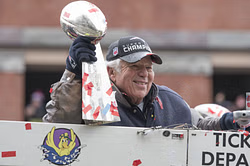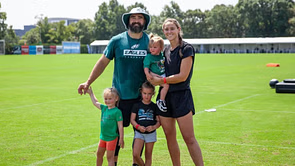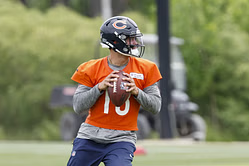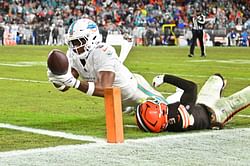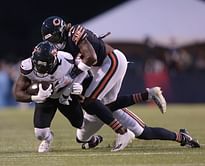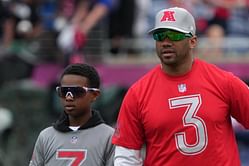The fantasy football season is about to start. This is the most exciting time of the year for all the football fans and the fantasy football managers.
The course of the season is all dependent on the fantasy football draft. After months of planning and strategizing, managers prepare themselves for the fantasy draft.
As we know that one size doesn’t fit everyone, similarly, not every strategy works in every league. Depending on the league, the strategy changes.
And one of the most common strategies used in fantasy football is that of handcuffing. That is a crucial element of any draft plan.
But what is handcuff in fantasy football?
Also Read: How To Draft In Fantasy Football? | The Ultimate Fantasy Football Draft Strategy
What are Running Backs Handcuffs in fantasy football?
One of the most contentious subjects in the world of fantasy football is that of handcuffing running backs.
If you’re someone who's been playing fantasy football for years now, you know exactly what we are talking about here.
And if you’re someone who’s new to the world of fantasy football, you must have heard it in your circles and might be overwhelmed in knowing this. We are here to explain that for you.
Handcuffs are a strategy that is usually used on the running backs. A running back handcuff is nothing but another running back who's insurance.
In cases of any injuries to your starter running back, this particular running back will be the backup.
One of the reasons why the RB handcuffs is contentious among fantasy circles is that this RB handcuff doesn’t carry any value of its own. If the regular starting running back remains active and stays healthy, as a fantasy football manager, you cannot add this RB to your fantasy squad.
Also Read: What are Dynasty Leagues and Keeper Leagues in Fantasy Football?
If the running back is elevated to a starter position, it is only that particular situation that will allow the player to derive the fantasy value.
And it is because the RB handcuffs do not have a value of their own, the fantasy football managers must be very stringent and strategic and picky. One of the major factors to notice while handcuffing is to understand the potential payoffs because you’re filling your roster spot with a player whom you cannot start as a manager.
Running back handcuff strategy depends on the format of the league - redraft or dynasty.
Handcuffing running backs in redraft fantasy leagues is tricky. Firstly this running back can save your season in case of any injury for the starter running back. The NFL is still a very physical sport and this RB handcuff might save you. But on the flip side, this spot can still go down as a waste in your 16-man roster.
On the other end are the dynasty leagues. The RB handcuffs carry a different role and meaning here. The roster size is generally very huge in dynasty leagues. This allows the fantasy manager to be a little flexible but again handpicking running backs who will actually serve your team well in the long term is extremely important.
FAQs
A. Fantasy football season starts during Week 1 of the NFL season. This is usually during the second week of September.
A. The Zero RB strategy in fantasy football is where the fantasy manager ignores the running back position and gives more preference to other positions such as the wide receivers and tight ends. This usually happens during the early rounds of the fantasy drafts.
A. This is a very tricky question because there is no right answer. The RB handcuffs act as insurance for your invested running back. You don’t want to use it but if there’s a need, this insurance will come in handy.

